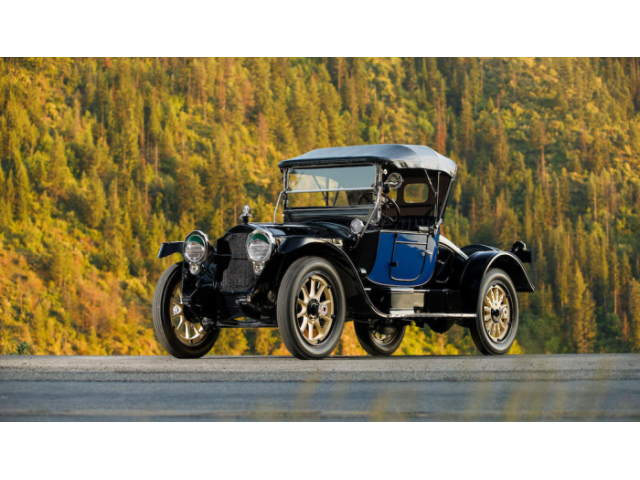1916 Packard 1-25 Twin Six Runabout
- Brand: Packard
1916 Packard 1-25 Twin Six Runabout
Packard was the leading luxury marque at the start of the Classic era. It was one of the oldest car companies in America, with the first Packard built in 1899. The company began life as the Ohio Automobile Company based in Warren, Ohio. In 1902 it became the Packard Motor Car Company and moved to Detroit in 1903. Early luxury cars were powered predominately by huge displacement six-cylinder engines until Cadillac introduced a V-8 in 1915.
After Cadillac introduced the first mass-produced V-8 engine for its 1915 models, Packard raised the stakes with the first series-production V-12. Presented for the 1916 model year, the Packard Twin Six was made until 1923 and returned for 1932. The touring’s were among the most popular styles.
The Twin Six's reliable engine of almost seven liters (424.1 cubic-inch) was noted for smooth acceleration in high gear and sufficient power to propel some of the models to 70 mph with this 88 hp engine. The 3-speed manual transmission had been moved from the rear axle to the back of the clutch. The Twin Six established Packard's reputation overseas for quality.
Twin Sixes had press-steel frames and were built on a choice of 125, or 135-in. wheelbase. The open models were painted in blue striped with cream-yellow. The hood and fenders were black; however, and the huge three-ft.-diameter artillery wheels were cream yellow striped with black. Standard equipment included a top that could be raised by one man, side curtains, a windshield, horn, clock, tire carrier and pump, and a complete tool kit. The car sold new for $2,600 to $3,350.
The Packard Twin Six was produced from 1915 - 1923. The name 'Twin Six' would be revived years later eventually becoming known as the Packard 'Twelve'.
There were 7,746 examples of the Packard Twin Six sold in 1916, its introductory year, with figures increasing to 8,899 in 1917. This was an amazing accomplishment considering the relatively high starting price of $2,600 that these luxury cars demanded.
The V-12 engine was comprised of two six-cylinder cars-iron blocks set at a 60-degree angle and rested atop an aluminum crankcase. It was a side-valve design that displaced a total of 424 cubic-inches and produced 88 horsepower. The pistons were made from lightweight aluminum alloy and there was full pressure lubrication which aided in the engines longevity.
The engine, clutch, and gearbox were a single unit and replaced Packard's earlier design of having the transaxle mounted on the rear axle. Packard was one of the first to use this type of drivelines. This setup reduced unsprung weight of the rear axle, improved ride and handling, and provided more reliability and rigidity.
The technological improvements continued for 1917 with Packard introducing a redesigned Twin Six with separate cylinder block and head castings. The aluminum pistons now had two compression rings and an oil scraper. Also, the intake and exhaust manifolds were redesigned. Even with these improvements, the horsepower rated remained at 88, although the rated RPM figure droped from 3000 to 2600.
Descriptions & pictures by rmw & bonhams
| Specification | |
| Production Start | 1916 |
| Country of origin | USA |




































